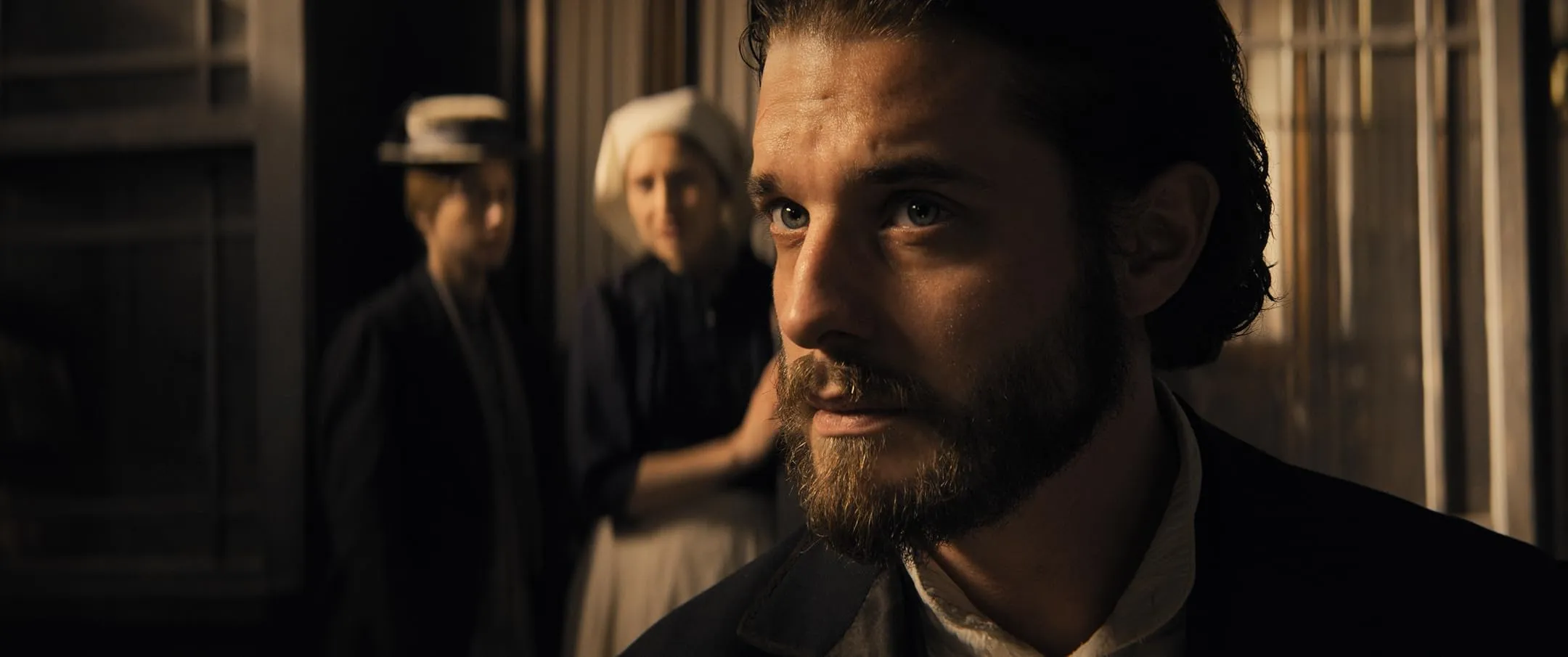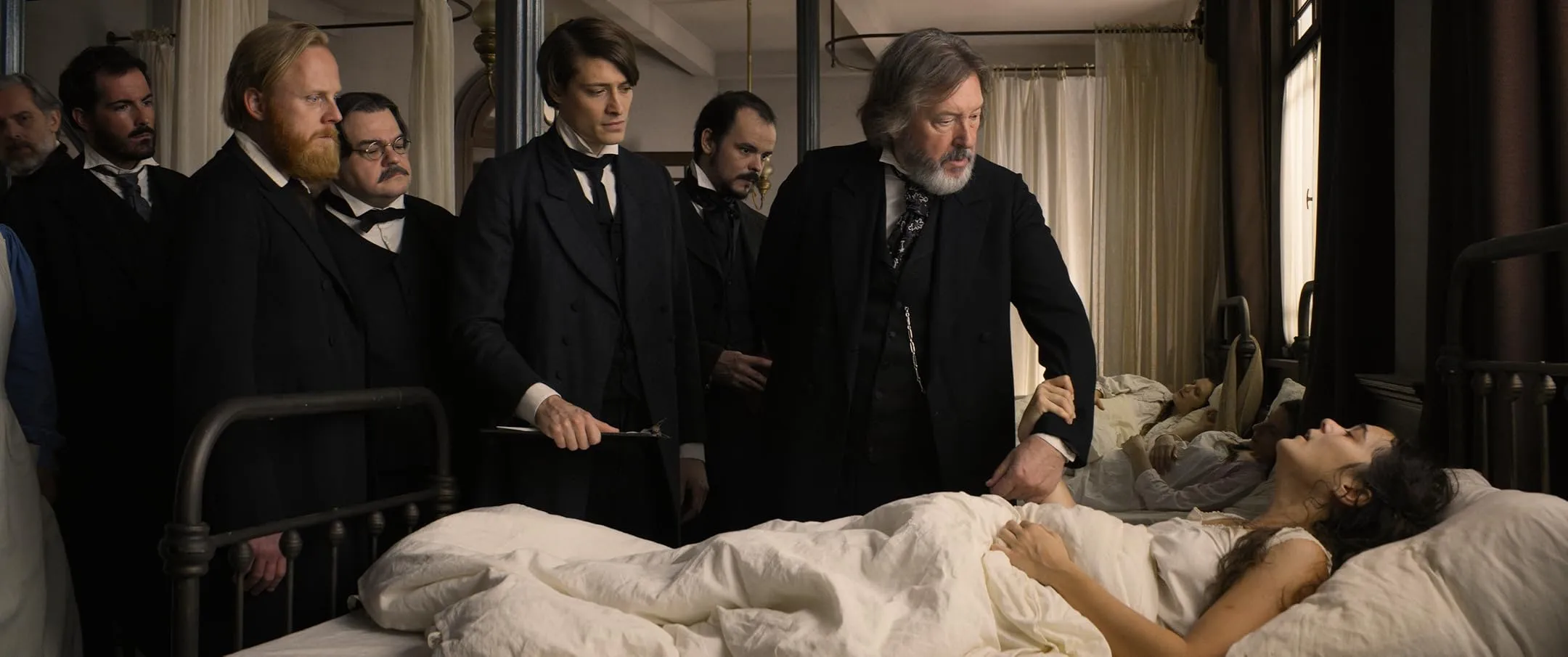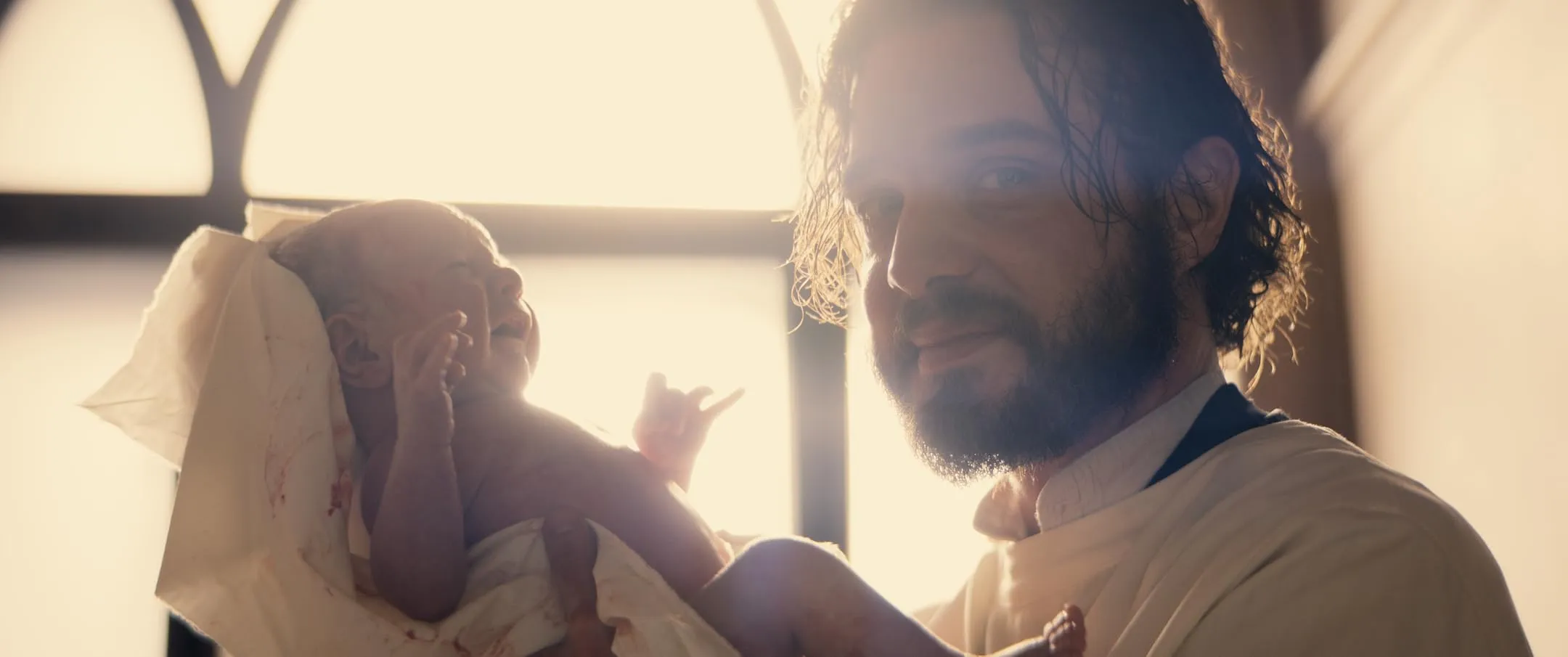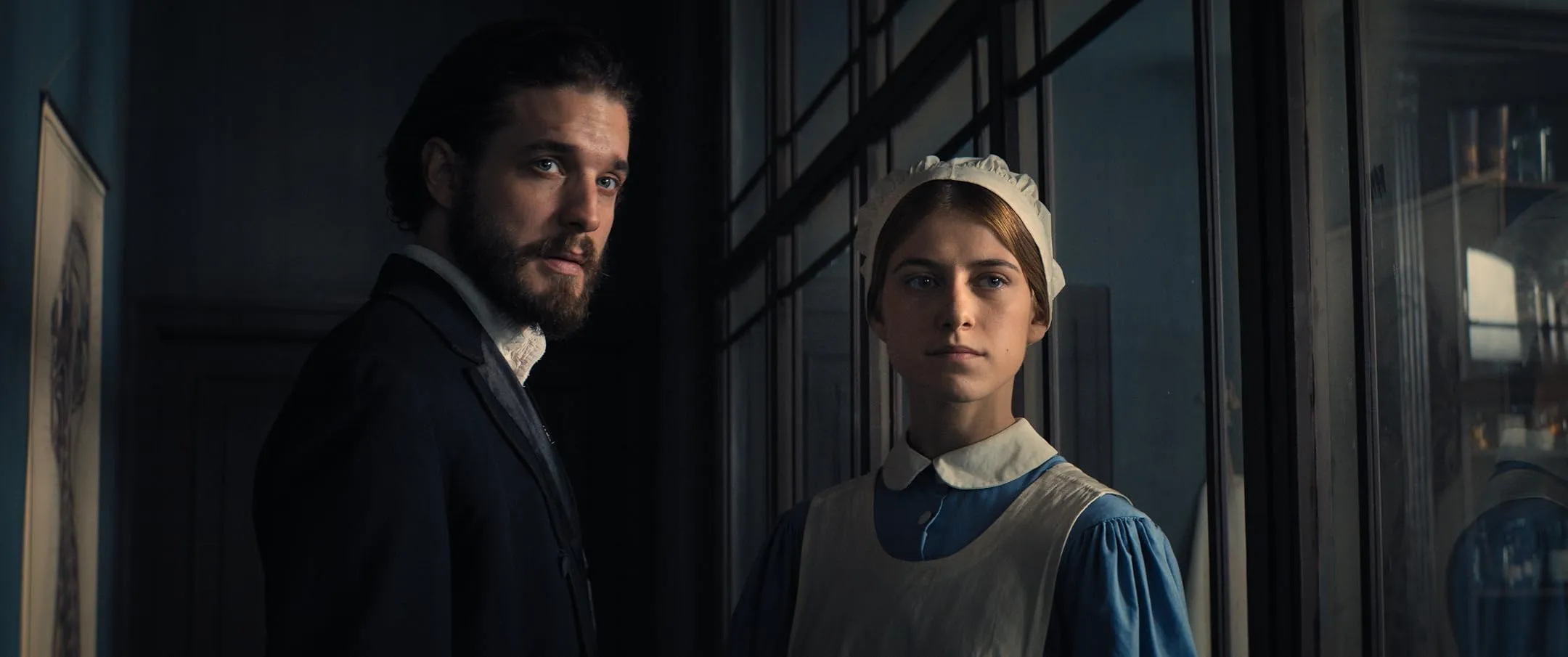In the dimly illuminated medical realm of 19th-century Vienna, a pioneering film arises to chronicle the incredible story of Ignaz Semmelweis, a Hungarian doctor who dared to defy medical convention. Directed by Lajos Koltai, “Semmelweis” depicts a watershed moment in medical history that would ultimately save many lives.
Set in 1847, the film transports viewers to a bleak medical scene in which maternity wards were feared as death factories. Miklós H. Vecsei presents Semmelweis as a passionate and driven young doctor working at Vienna General Hospital, where an unexplained tragedy occurred. Puerperal fever, an unknown murderer of new moms, terrified pregnant women so much that they would prefer to give birth on the street than visit a hospital.
A pregnant woman screaming on the street, afraid of the hospital’s lethal reputation, is the opening scene of the film that best illustrates this horror drama. Semmelweis started a research that would become revolutionary. He notes a sharp contrast between two clinics: one run by doctors with a high mortality rate and another run by midwives with nearly no maternal deaths.
His amazing discovery? Doctors who went directly from performing autopsies to delivering newborns were inadvertently spreading fatal illnesses. Semmelweis challenged an entire medical profession that was reluctant to change by presenting a simple yet radical solution—hand-washing. He faces bureaucratic obstacles and professional mistrust alongside Emma Hoffman, a midwife played by Katica Nagy.
Koltai transforms what could have been a dull medical documentary into a captivating narrative that incorporates aspects of detective thriller, medical drama, and romantic subplots. The film celebrates the human spirit of inquiry, persistence, and the unwavering desire to save lives and document a scientific achievement.
More than merely a historical account, “Semmelweis” reveals how one person’s observation and courage may fundamentally change medical understanding, laying the groundwork for modern hygiene standards that we now take for granted.
Fever, Facts, and Cinematic Freedom
In the mid-nineteenth century, Vienna’s medical sector was a dangerous place where science and tenacious tradition met. Childbirth was a scary experience, with maternity wards becoming more like death traps than places of hope. Puerperal fever, a terrible bacterial infection, claimed more lives than war, transforming what should have been joyful times into tragedies.
Medical institutions at the time were guided by outdated beliefs that were strongly ingrained in myths about disease transmission. Doctors strolled freely between autopsies and medical care, their dirty hands transporting unseen killers from corpses to vulnerable moms. The widespread belief in “bad air” or miasmatic hypothesis meant that the true culprits – microscopic creatures – went unnoticed.
“Semmelweis” takes liberties with historical narrative, merging fact and dramatic interpretation. While the core of Ignaz Semmelweis’s important discovery stays unchanged, the film adds fictional aspects to heighten the dramatic tension. Emma Hoffman, for example, is a fictional character—a romantic and professional companion who does not exist in historical archives.
The film purposefully omits the worst aspects of Semmelweis’ life. His eventual mental breakdown and tragic death in an asylum are purposefully kept out, instead emphasizing his professional success. This narrative approach allows the film to praise his scientific triumph while minimizing the weight of his pain.
Director Lajos Koltai transforms a potentially boring medical history into a gripping tale of professional opposition and triumph. The film portrays the core of Semmelweis’ struggle: a single voice fighting an entire medical establishment’s deeply entrenched traditions.
“Semmelweis” is more than just a documentary; it combines historical facts and dramatic storytelling. It tells a human story of scientific discovery, showing how one person’s persistence and observation may question entire systems of thought. The film reminds us that people prepared to challenge the established quo often make progress, even when the rest of the world resists.
Microscopic Battles and Medical Rebellion
The narrative of Semmelweis is a high-stakes medical detective story, beginning with a heart-stopping moment that establishes the film’s intense tone. A pregnant lady screams through Vienna’s streets, urgently trying to avoid the hospital she refers to as a “death factory” – a stunning metaphor for the medical institution’s lethal reputation.
Miklós H. Vecsei depicts Semmelweis as a medical maverick, detective, and revolutionary. His inquiry begins with a perplexing observation: why do women die at frightening rates at one clinic while another, run by midwives, has nearly no deaths? The answer is hidden in a microscopic universe that doctors do not yet understand.
The film expertly weaves together numerous genres, transforming a medical drama into something more complicated. An emergency tracheotomy performed during a beautiful gala is a critical story element, providing Semmelweis with professional protection. Emma Hoffman, a midwife who becomes a kind of medical double agent, reports on Semmelweis while developing romantic feelings for him, taking the narrative into espionage.
Semmelweis’s primary argument is revolutionary: doctors who switch from autopsy to birth rooms carry fatal viruses on their unwashed hands. His battle is not simply medical; he is up against an entire bureaucratic structure that is more concerned with safeguarding professional pride than saving lives.
The climax is a traditional courtroom drama, with Semmelweis addressing a medical board. It’s a theatrical encounter representing the greater fight between progressive ideas and institutional resistance. His friend Jakob becomes the key to solving the scientific mystery, revealing how doctors unintentionally transmit illnesses from corpses to living patients.
Director Lajos Koltai transforms what could have been a boring scientific narrative into a gripping human story. The film implies that scientific breakthroughs are as much about human drama as microscopic findings. Semmelweis emerges as more than just a doctor; he is a passionate warrior battling against a society emphasizing tradition over human life.
The film combines romance, medical study, and historical drama to depict the complex road of challenging traditional medical practices. It demonstrates how personal passion and observation may dramatically change our understanding of science and human health.
Passion, Persistence, and Medical Mavericks
At the center of “Semmelweis” is Miklós H. Vecsei’s electric portrayal of Ignaz Semmelweis, a doctor who is equal parts scientific revolutionary and romantic hero. Vecsei transforms Semmelweis from a historical footnote to a captivating person with a full head of sweaty black hair and piercing blue eyes.
He’s not a smooth-talking medical gentleman but a ruthlessly direct researcher with no patience for social etiquette. Consider him the nineteenth-century equivalent of a brilliant technological innovator: brilliant, obsessive, and utterly consumed by his objective.
Emma Hoffman by Katica Nagy is an excellent counterpoint to Semmelweis’s intensity. She’s more than simply a love interest; she’s also an important ally in his medical mission. Their love grows with a delicate intricacy that transcends the traditional historical drama romance. In one especially charged scene, when Semmelweis assists her through a window, he takes a deep breath of her perfume, a subtle, almost primordial connection that speaks volumes about their blossoming relationship.
László Gálffi’s Professor Klein emerges as a sophisticated enemy, not a cartoon villain but a symbol of a medical system opposed to change. He is calculated and careful of institutional prestige, hiring Emma to spy on Semmelweis while keeping a professional, neutral appearance. The power dynamics between Klein, Semmelweis, and Emma add an intriguing political dimension to the medical drama.
The film’s genius is in its character development. These are complicated persons grappling with scientific discoveries, personal ambition, and institutional resistance, not just historical personalities. Vecsei plays Semmelweis, a daring medical detective motivated by a near-superhuman desire to save lives. His unwavering determination transforms what could have been a dull medical biography into a story about human passion and intellectual revolt.
Underneath the medical study is a poignant human story about defying established systems, believing in evidence over tradition, and the courage it takes to stand alone against an entire professional community. The performances capture this spirit: raw, uncompromising, and sincerely committed to a higher purpose.
Each character represents a microcosm of the wider conflict between progressive ideas and institutional stagnation. They present Semmelweis’s story and reveal how scientific progress is made through persistence, courage, and a firm conviction in human potential.
Breaking Boundaries, Saving Lives
“Semmelweis” is more than just a medical drama; it’s a profound analysis of human reluctance to change, where scientific truths battle deeply established institutional pride. The film examines the contradiction between progress and tradition. It reveals how medical institutions can become more concerned with preserving their reputations than healing lives.
At its core, the narrative glorifies the lone crusader – the individual prepared to confront entire systems of thought. Semmelweis emerges as a quintessential underdog, a Hungarian doctor opposing Viennese medical orthodoxy. His battle is about more than just hand-washing; it’s about opposing a mentality prioritizing professional pride over human lives.
The bureaucratic machine emerges as a distinct character. Professor Klein represents an entire system structured to protect the status quo, in which acknowledging error is deemed more risky than continuing fatal behaviors. The film wonderfully demonstrates how institutional inertia may be more deadly than any disease, with administrators more concerned with maintaining professional reputations than preventing patient fatalities.
The subject of systemic resistance extends far beyond medical history. It’s a universal story of how existing power systems consistently oppose innovation. Semmelweis becomes a symbol for any revolutionary thinker willing to confront conventional knowledge.
The ethical stakes are clear: every instant of institutional reluctance results in human misery. The film celebrates human courage and scientific integrity by showing how one person’s observations can drastically impact understanding.
Finally, “Semmelweis” conveys a significant message: progress is never comfortable or easy and always necessitates individuals who are ready to stand alone against enormous odds. It reminds us that every scientific accomplishment results from human passion, persistence, and an uncompromising devotion to truth.
Narrative Alchemy: Where Science Meets Drama
“Semmelweis” is a cinematic shape-shifter that seamlessly moves between genres, like a medical detective novel mixed with a romantic thriller. Director Lajos Koltai works narrative magic, transforming what could have been a dull historical report into a thrilling journey of scientific discovery.
The film begins as a medical probe, soon transitions into an espionage-tinged drama, and then abruptly explodes into a judicial battle. Emma Hoffman’s character journey exemplifies this genre-blending approach: she begins as a prospective spy, becomes a romantic interest, and ultimately emerges as a critical scientifically.
Surprising narrative choices build suspense. An emergency tracheotomy during a fancy event becomes more than just a medical procedure; it serves as a strategic plot element that feels like a mix of medical drama and political intrigue. The courtroom scene transforms the scientific study into a pure dramatic confrontation, with Semmelweis confronting a medical board in what feels like a high-stakes trial.
Koltai realizes that facts alone do not fascinate listeners. By combining love subplots, investigative tension, and historical accuracy, he produces an informative and intensely human narrative. The film does more than merely convey Semmelweis’ story; it lets you feel the intensity of his purpose.
The end product is a genre-defying event that demonstrates medical history can be as captivating as any Hollywood blockbuster. “Semmelweis” reminds us that true scientific breakthroughs are frequently more dramatic than fiction, replete with human passion, struggle, and incredible determination.
Capturing Shadows of Scientific Revolution
Lajos Koltai transforms nineteenth-century Vienna into a visual symphony of medical tension and historical accuracy. His lens catches the era’s raw realism; hospitals feel like labyrinthine temples of mystery, with shadowy halls and candlelit rooms brimming with unsaid medical secrets.
The cinematography takes on its own character, reflecting the raw, merciless medical environment through subdued earth tones and harsh lighting. Each frame is painstakingly crafted, with costume details so perfect that you can practically smell the starch in doctors’ jackets and feel the weight of their moral obligations.
Every scene reflects Koltai’s experience as a cinematographer. He approaches medical environments as psychological landscapes, employing visual metaphors that speak louder than words. Wide images of Vienna’s clinical environs are juxtaposed with intimate close-ups of Semmelweis’s passionate face, forming a visual narrative of human drive versus institutional enormity.
During investigative moments, the camera work is especially brilliant, transforming medical study into a detective thriller. Shadows dance over features, medical instruments gleam menacingly, and every movement promises a possible discovery or disaster.
Koltai achieves a stunning feat of directorial alchemy by prioritizing visual storytelling over explanation, resulting in a cinematic experience that feels both historically correct and emotionally powerful.
Legacy of a Medical Revolutionary
“Semmelweis” goes beyond the scope of standard historical drama, providing more than just a glimpse into nineteenth-century medical practices. It’s a powerful demonstration of human resiliency, scientific integrity, and courage to confront deeply held institutional assumptions.
The film does more than just document a medical breakthrough; it reveals the human side of scientific discovery. Combining genres and emphasizing emotional truth above exact historical data transforms a potentially boring medical narrative into a heart-pounding examination of human potential.
In an era when scientific communication remains difficult, this film is a powerful reminder of how human passion can affect entire systems of understanding. Semmelweis’ story reaches far beyond its historical context, connecting directly to modern conflicts between innovation and institutional resistance.
The film is a notable achievement in Hungarian cinema. It represents a complex, intellectually rigorous investigation of a national hero while also speaking to universal human feelings. It celebrates the power of observation, the significance of questioning conventional thinking, and the amazing impact one motivated individual can have on human understanding.
Ultimately, “Semmelweis” is more than just a film. It’s a celebration of scientific curiosity, an homage to people who dare to see the world in new ways, and a strong reminder that progress is always the result of dogged human drive.
The Review
Semmelweis
"Semmelweis" is a superb cinematic trip that transforms a potentially boring historical medical narrative into an engaging, multilayered investigation of scientific innovation. The film goes beyond standard biographical dramas with superb performances, unique genre-blending, and a deep commitment to storytelling. It celebrates human determination, confronts institutional obstacles, and reveals the personal struggle that drives scientific achievements. Director Lajos Koltai creates a scientifically rigorous and emotionally gripping narrative, making complex medical history feel vital and understandable.
PROS
- Compelling lead performance by Miklós H. Vecsei
- Innovative genre-blending (medical drama, thriller, romance)
- Historically significant storytelling
- Visually stunning cinematography
- Nuanced exploration of scientific discovery
- Strong supporting performances
CONS
- Some historical liberties with factual events
- Potentially complex narrative for casual viewers
- Intense medical scenes might be challenging for sensitive audiences





















































